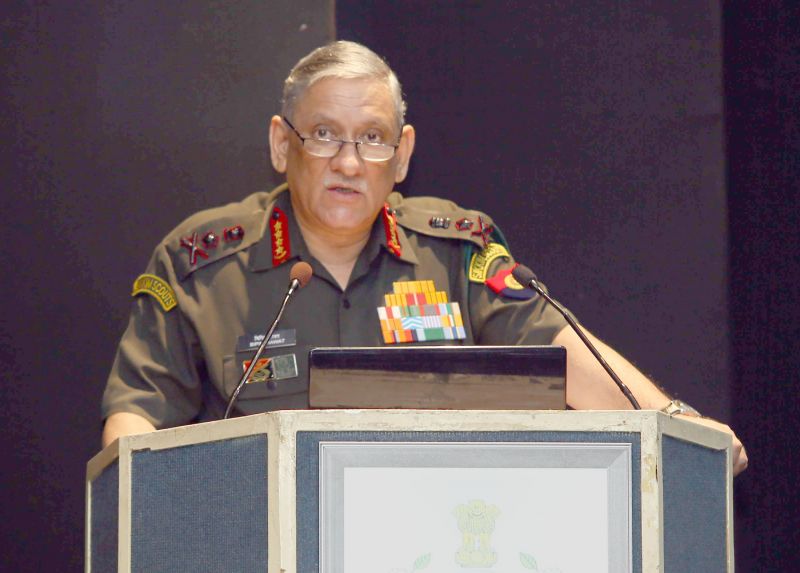Land Warfare Doctrine – 2018: An assessment
Jaibans Singh

The Land Warfare Doctrine -2018 of the Indian Army is a comprehensive document that covers national threat perception in its entirety and offers a detailed outline of the vision to address the same. It speaks of safeguarding the “sovereignty, territorial integrity and unity of India against external threats and internal subversion by deterrence or by waging war.” By and large, it covers all challenges that would be posed in meeting the stated objective.
In the first paragraph, the document speaks of India’s foreign policy and dovetailing of the national defence requirement in the same. A doctrine at this level needs to contain more than a few lines in this very significant aspect. The same also needs to be prepared after detailed interaction with the Ministry of External Affairs.
In broad consideration, India’s foreign policy can be factored as one aspiring for a peaceful, balanced and stable world. It roots for multilateralism, based on the philosophy of uniting mankind with the concept of "Vasudhaiva Kutumbakam" (universal brotherhood). Within the ambit of this broad concept, India has been forging region specific “strategic partnerships” with several nations. These partnerships do not follow a fixed template - they cover a diverse area. There has been a significant revitalization of India’s engagement with world powers – both bilaterally and within the framework of regional groupings. The foreign office also acknowledges issues such as nuclear proliferation, armed conflict and non-conventional warfare such as terrorism, migration and refugee problems as challenges posed to the nation. To this extent, the thrust of the doctrine towards Hybrid warfare is well appreciated.
In the security domain what is most important is including the military and soft power aspects as leverages. The same needs to be constantly and consistently integrated with the foreign policy imperatives. Seamless incorporation of military thought process with foreign policy is a necessity that should get doctrinal support.
The requirements for the new form of Hybrid warfare in terms of technology, human resources and jointness have been adequately elaborated. In the consequence of the Government accepting the doctrine, it would become duty-bound to provide the necessary budget to apply the same and that too in a time-bound manner. National security is not something that can be delegated to five years plans etc. To that extent, the document should have refrained from mentioning the intention of the Land Forces to, “ensure optimal utilisation of the defined budget for force modernisation and further enhancing joint and integrated operations.” It should have instead demanded, “adequate budgetary support to carry out a time-bound force modernisation in tune with the emerging requirements.”
The Land Warfare Doctrine should lay down the support that Land Forces require and expect from the maritime and air elements. It should demand further studies at the Government level to ensure that the same is forthcoming in consonance with its position as the key element in any conflict. Pushing for Joint Commands is something that is beyond the scope of the doctrine and it should be avoided.
The positioning of the concept of Integrated Battle Groups as central to the doctrine is a step in the right direction. On approval, the matter will need to be pursued with vigour and taken to its logical conclusion. Other elements can join in later when the concept crystallises as a national policy.
There is a need to dwell more on the methodology to be followed in the most significant aspect of Domestic Defense Capability. More discussions between the Ministry of Defense, Ministry of Home and the National Security Advisor are required to further fine tune the concept and then give it a policy shape. What is available presently in the doctrine is a very broad-based and ambiguous concept that falls short of fixing responsibility and the attendant accountability. It should not be forgotten that the nation looks primarily at its Army to ensure its security; the concept that needs to be incorporated therefore is “where lies accountability will also lie authority.”
To say that each soldier will be a “scholar warrior” would amount to taking things a bit too far! It takes a lot to become a scholar and an equal amount to become a warrior. What needs to be established, however, is the minimum educational level and especially aptitude tests for assessing the technological skills so important in the performance of duties in the modern context. Further, it is felt that a review of scaling is not a doctrinal function and is best left out of such a document.
Information Warfare needs more attention!
Cyber warfare, electronic warfare and the most important Psychological operations have remained on the drawing board for far too long. The doctrine needs to firmly lay down the requirement and the Army should look for application of the same in a time-bound manner. The availability of national assets like the NTRO and integration of the Ministry of Information and Broadcasting in the overall effort is something that needs to be formalised within the doctrine.
The formulation of the doctrine is a step in the right direction. It is comprehensive and well laid out! The progression should be directed towards highlighting such elements outside of the organisation that are required to act as force multipliers. National security is a national effort in which the guiding role is that of the land forces, the doctrines should be directed towards the creation of this realisation and setting forth the responsibilities.
Jaibans Singh is a reputed defense and security expert, columnist and author




